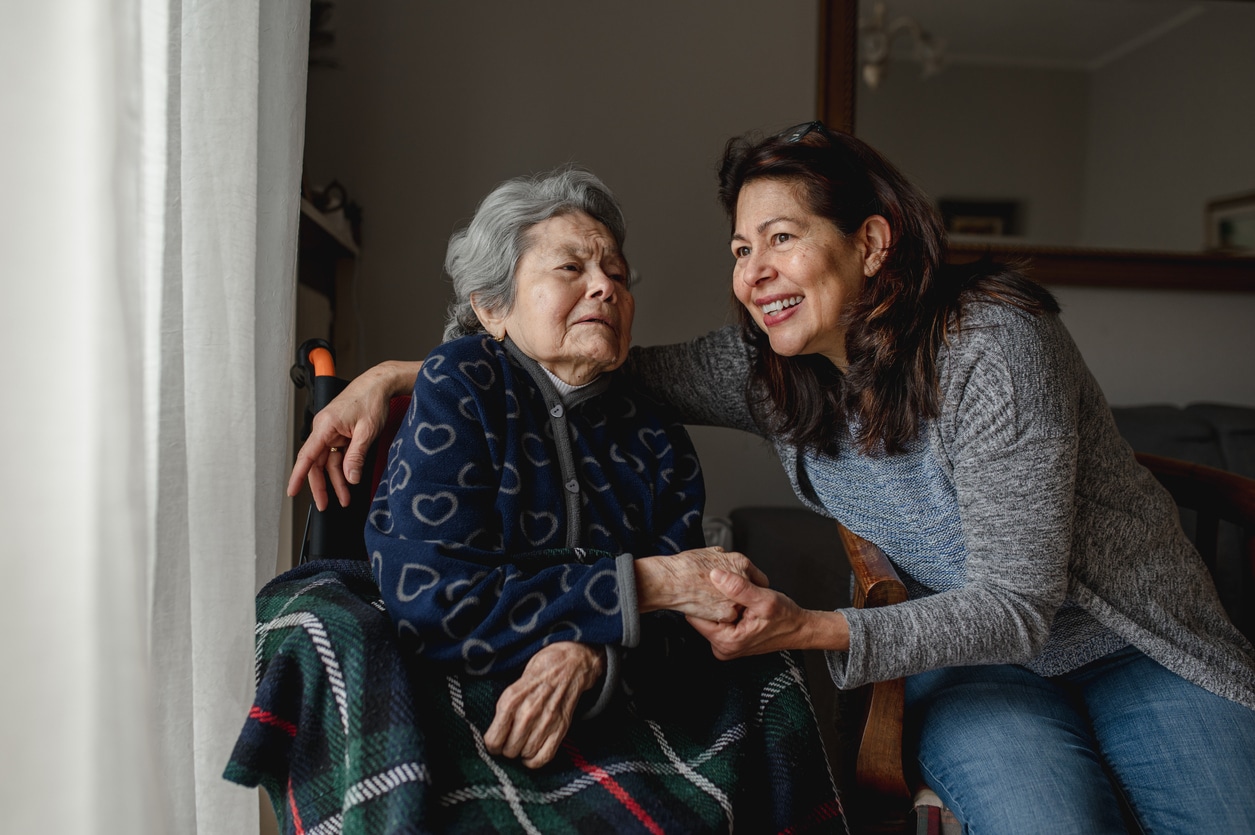Almost 30% of American adults care for a family member, according to the National Society on Aging. To bring awareness to the valuable work these citizens provide and the challenges they face doing it, the National Family Caregiver Association proclaimed November National Family Caregivers Month in 1994.
Caregiver Challenges: Balancing Work and Caregiving
Most family caregivers are working full-time and caring for an elderly parent, but all of us face challenges in managing the time, emotional and financial requirements of elder care.
According to a landmark study of working caregivers by Genworth, “Approximately one-third of caregivers provide 30 hours – or more – of care per week. Half of those who do so estimate that they lost around one-third of their income.” That’s because, the study found, 77% of caregivers had to miss work and 52% had to work less to care for family members.
How to help a family caregiver balance responsibilities:
- Provide breaks for a day or week, allowing the caregiver to take time for themselves
- Create a safe place to vent frustrations and share the joys of caregiving
- Offer to help a coworker who has to miss work for family care purposes
- Take on core tasks like buying groceries, running errands or cooking a meal
Caregiver Challenges: Limited Access to Resources
Many caregivers don’t have much time to plan before being pressed into service and are unaware of caregiver support resources that can ease the burden. Yet there are multiple agencies and nonprofits at every level ready to provide support.
The Administration for Community Living is a federal government agency established to “maximize the independence, well-being and health of older adults, people with disabilities across the lifespan, and their families and caregivers.”
The National Alliance for Caregiving and the Family Caregiver Alliance are national nonprofits that provide programming, resources and advocacy.
Every state has an agency or administration devoted to helping older adults and their caregivers, and most counties and cities have government and nonprofit organizations that meet local needs. Apps and online communities also give caregivers the support they deserve.
How to help a family caregiver access resources:
- Compile a list of local senior and caregiver organizations and agencies
- Build a list of classes and workshops to help caregivers feel better prepared to provide care or manage finances
- Identify local sources of respite care and other senior-focused services
- Research in-person and online support groups
- Share or purchase apps with special services for seniors and family caregivers
Additional Support for Caregivers
Another goal of National Family Caregivers Month is to encourage relatives and friends to provide emotional support in addition to practical help. Since many caregivers feel isolated and invisible, this kind of assistance is especially valuable.
How to help a family caregiver cope with the emotional toll:
- Send a thank-you note, e-card or other greeting
- Ask your employer to recognize caregivers in the community with a promotion or special
- Extend a specific type of help, like cooking dinner or sitting with their parent
- Post something about National Family Caregivers Month on Facebook and other social media channels
- Purchase a gift certificate for a spa treatment or nice meal out to encourage caregiver self-care
- Write a letter to local, state or federal elected officials advocating for policies to help caregivers
These National Family Caregivers Month activities help raise awareness of and support for the important and loving care so many Americans provide their aging relatives. But don’t limit your action to November. Look for ways to acknowledge and aid family caregivers every day.




